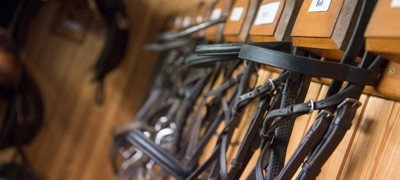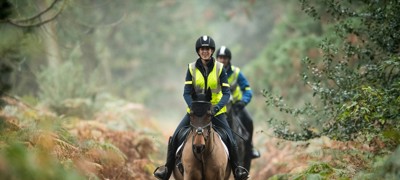Please don’t worry about the dress code for your assessment day. There’s lots of information available on what to wear in your Skills Record in addition to the information listed below.
However, if you would like to speak to someone about the dress code for assessments, please call our Education Team on 02476 840508 and they will be able to reassure you.
Disease Prevention
To minimise the risk of transmitting infectious diseases, we request that all candidates change into clean clothing and, wherever possible, disinfect footwear before attending a BHS assessment, particularly if you have been in contact with horses from outside the assessment centre.
If a yard you have been in contact with experiences an outbreak of an infectious disease prior to your BHS assessment, please contact the BHS Education Team on 02476 840508 for advice before attending your BHS assessment.
We are very grateful for your co-operation with this protocol and your help to tackle our shared concern around the potential spread of infectious diseases within the equine population.
General Guidance
Please don’t go out and buy anything special, we just want you to feel comfortable and relaxed during your assessment. We recommend clothing that is primarily safe and practical, and suitable for the given weather conditions. It is always a good idea to come in neat and tidy clothing to make a good impression, just as you would in any professional equestrian workplace. We cannot guarantee that all assessment centres will have facilities for a lockable place to store your bag/s and valuables during the assessment. Please be mindful of this.
Hats
chevron-down
chevron-up
You are required to wear your hat during any mounted, lungeing, leading or loading activities. Hats with fixed peaks are not permitted for the cross-country sections of assessments, in line with British Eventing standards. Your hat must be correctly fitted and meet the current safety standards. For more information on hats check our guidance.
Body protectors
chevron-down
chevron-up
A body protector is strongly recommended by the BHS in all aspects of ridden activity, but it is compulsory for any assessments that include cross-country jumping and could be required during a show jumping element of an assessment depending upon the centre’s insurance policy. A body protector must comply with current safety standards; check out our guidance.
Air jackets
chevron-down
chevron-up
Air jackets should not be worn within groups of riders in an assessment situation. This is due to the increased risk of reaction of horses with other candidates. If you wish to wear an air jacket, please contact the assessment centre for their consent.
Jackets
chevron-down
chevron-up
It is not compulsory for you to wear a jacket on the day for any assessment, although tops should fit well and have sleeves. If you are taking part in a riding session during your assessment, long sleeves are advised for safety, even if it is a hot day. You can change out of your long-sleeved top once your riding section has finished. For jumping sections, you should wear a shirt with sleeves and either a tie or stock.
Breeches and jodhpurs
chevron-down
chevron-up
Both are acceptable. Plain colours are usually more practical for assessment days. If you are only taking a care assessment, you can also wear a practical pair of trousers rather than breeches or jodhpurs if you would be more comfortable.
Boots
chevron-down
chevron-up
Long leather riding boots or boots with leather gaiters are suitable for the riding sections of the assessment. You can choose to wear suitable shoes or boots for the care assessments if you would rather.
Gloves
chevron-down
chevron-up
For safety reasons we ask that you wear gloves for any riding, leading or lungeing activities.
Spurs
chevron-down
chevron-up
These are not usually required until Stage 4 and beyond. If you do require them during your assessment, they would need to be short and blunt with the shank set centrally to the rear. Spurs should only be used when the need arises, and you may be asked to remove them if this is not the case.
No jewellery
chevron-down
chevron-up
Jewellery within a practical environment can often cause injury or safety concerns, so for this reason it is advised that no jewellery, apart from a watch, is worn or is covered up during your assessment.
Hair
chevron-down
chevron-up
It is also advised for safety reasons that hair of shoulder length or longer is tied back and a hairnet is worn.
Clothing for Each Assessment
In the below sections, we have provided specific information on clothing according to which assessment you may be taking.
It’s important that you’re comfortable throughout the day as this will help you to perform your best throughout your assessment. Try to remember to bring extra clothes suitable for a variety of weather conditions, just in case!
For safety, we ask you wear long sleeves when riding, hair of shoulder length or longer is tied back and a hairnet is worn and any jewellery should be covered up or removed.
Care and Lunge Assessments (All Stages)
chevron-down
chevron-up
For the care units, you will need:
- Boots: You can choose to wear long leather riding boots or boots with leather gaiters or suitable shoes or boots if you would rather.
- Jodhpurs/trousers: You will need to wear sensible yard clothing; this may include trousers or jodhpurs, a dark colour is more practical.
- Top: We would recommend that you wear a jumper or gilet with a polo shirt underneath.
- Hat and gloves: Bring along your riding hat (please ensure this meets current safety standards) and gloves to your assessment.
Stage 1 Ride
chevron-down
chevron-up
For Stage 1 Ride, you will need:
- Hat and gloves: Ensure your hat meets current safety standards.
- Body protector: If you would normally wear a body protector, please feel free to wear this during your assessment, even though it is not a compulsory requirement during the Stage 1 Ride. For safety, we ask you wear long sleeves when riding, hair of shoulder length or longer is tied back and a hairnet is worn and any jewellery should be covered up or removed.
Throughout the ridden assessments, you are asked to carry a whip. At Stage 1, you will need to carry a short whip between 14 and 30 inches.
Stage 2 Ride
chevron-down
chevron-up
For Stage 2 Ride, you will need:
- Hat and gloves: Ensure your hat meets current safety standards.
- Boots: Riding boots can either be long boots or short boots with leather gaiters.
- Jodhpurs: Plain jodhpurs or breeches are ideal.
- Body protector: As the Stage 2 Ride assessment involves jumping, we strongly recommend a body protector is worn (ensure this meets current safety standards). If you choose to wear a body protector, you can wear it over or under a jacket or with a plain sweatshirt instead of a jacket. Please remember to check with the centre where your assessment is taking place, as their insurance policy may mean wearing a body protector when jumping is compulsory.
At Stage 2, you will be required to carry a whip that does not exceed 39 inches in length during your flat work.
It is recommended one whip is permitted for show jumping and must be between 45-75cm and must not be weighted or with a hard point at the end. The end of the whip must be padded. The ‘pad’ must be smooth with no protrusion or raised surface (which included embroidery) and be made of a shock absorbing material throughout its circumference.
Stage 3 and 4 Riding
chevron-down
chevron-up
For Stage 3 and 4 Riding you will need:
- Hat and gloves: Ensure your hat meets current safety standards. Please note, hats with fixed peaks are not permitted for the cross-country riding, in line with British Eventing standards.
- Boots: Riding boots can either be long boots or short boots with leather gaiters.
- Jodhpurs: Plain jodhpurs or breeches are ideal.
- Body protector: These are compulsory for the cross-country sections of these assessments; we also strongly recommend that a body protector is worn during the jumping element of these assessments too. Please remember to check with the centre where your assessment is taking place, as their insurance policy may mean wearing a body protector when jumping is compulsory.
For flatwork riding you can ride with a schooling whip up to 39”. It is recommended one whip is permitted for show jumping and cross country and must be between 45-75cm and must not be weighted or with a hard point at the end. The end of the whip must be padded. The ‘pad’ must be smooth with no protrusion or raised surface (which included embroidery) and be made of a shock absorbing material throughout its circumference.
At Stage 4, spurs may be worn for all disciplines. They should be short and blunt with the shank set centrally to the rear. They must only be used as necessary and you will be asked to remove them if the assessor or centre representative feels they are being misused.
Stage 2, 3 and Stage 4 Coaching
chevron-down
chevron-up
For your Stage 2 and 3 Teach and Stage 4 coaching assessments you will need:
- Hat: Even though this is a non-ridden assessment, you are still required to wear your riding hat (ensure this meets current safety standards).
- Top: We would recommend wearing a plain polo shirt and jumper.
- Jodhpurs: You can choose between wearing plain jodhpurs or appropriate professional trousers.
- Boots: Please wear long riding boots or short boots with matching gaiters and tie long hair back.




